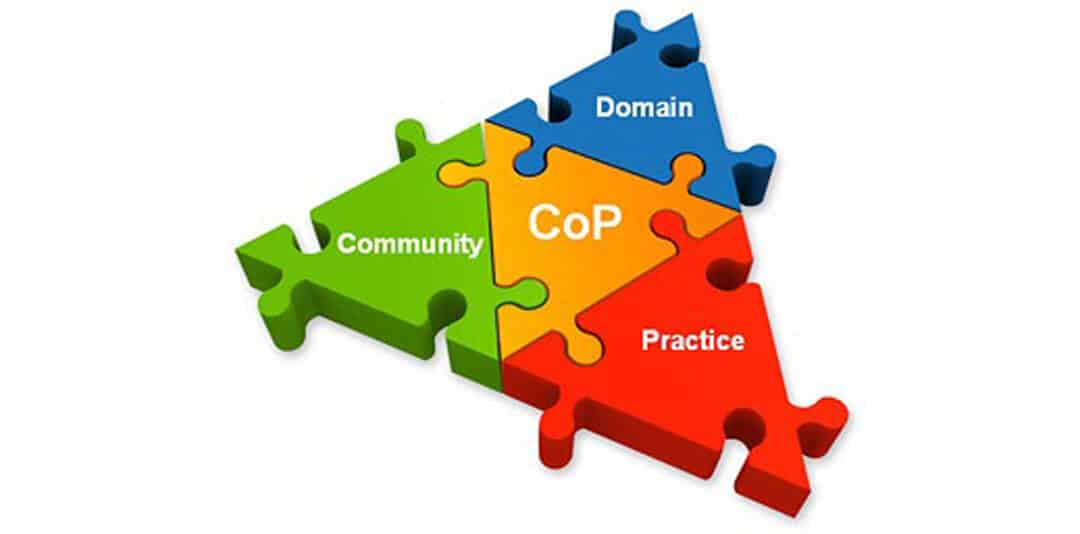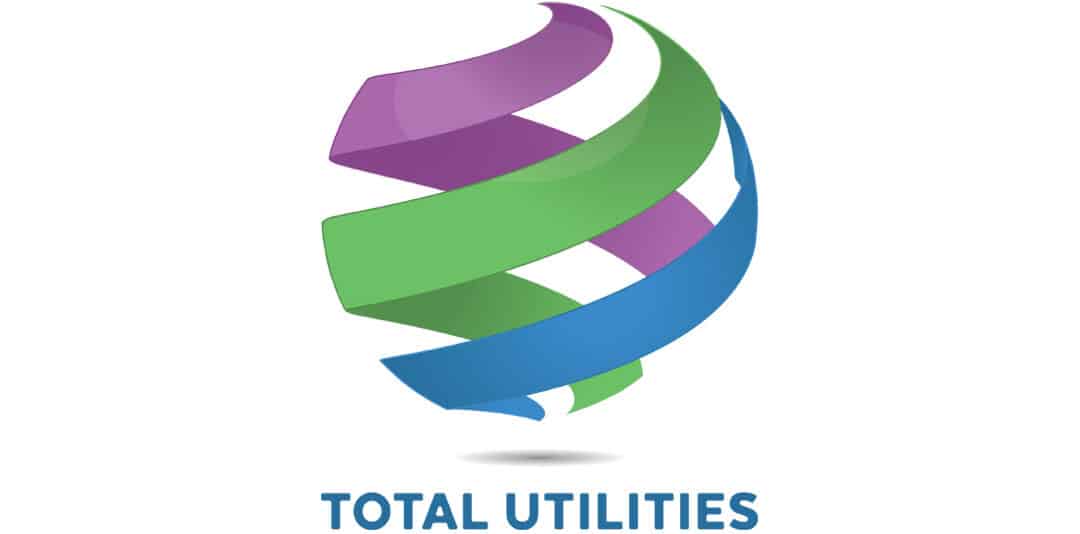
by DavidSpratt | Nov 3, 2017 | ICT
This is the third and final article on Communities of Practice (COPs), a model designed to help align business strategy with the evolving knowledge and experience of your people, while still taking advantage of the efficiencies that can be gained through more formal organisational structures and processes.
I can now safely say, after many years of practice — complete with a few painful cock-ups along the way — that the workplace model, Communities of Practice (COPs), does work. Making Communities of Practice work doesn’t happen on its own, but with the right groundwork in place and organizational support they can flourish.
COPs are made up of three essential elements: a domain (common ground or project), community (the particular group of people working on the domain), and practice (the community’s actions taken to develop and share knowledge in carrying out the job together).
There are six key components to making Communities of Practice work in the real world
1. Select the Practices that will underpin business strategy and unite your people
This process isn’t dictated by one manager. We pulled together a team of respected leaders and experts in the business and charged them with finding an initial group of three areas for “practice development”. That team determined that the business’ management of records and documents, information security, and messaging, were critical technologies with skills, activities and innovation at a premium.
Getting people to agree on exactly what “messaging” meant, for example, was difficult.
Expect the first few COP sessions to be talk fests where people debate in minute detail exactly how the particular Practice is defined, what members should be doing , how they will do it and what outputs they expect.
2. Identify the right people to participate
We asked for volunteers. Trying to name people and then advise them “congratulations we have found another way to suck the joy out of you” just doesn’t fly. We recognise many dedicated staff already work longer hours than is good for them.
3. Make time and resources available
Asking your busiest expert to take on a COP lead role without providing support and resources will see him or her head out the door faster than you can say “Mummy has moved in with Uncle Bob”.
Over time the Practice will introduce efficiencies and improvements that make work more enjoyable and effective, but it won’t happen overnight and you need to plan for that in terms of resources and people’s time.
4. Find easy-to-use technology to ensure ongoing engagement
When we first started COPs we thought a couple of face-to-face meetings a year and a monthly video or voice conference would be enough to drive results. How wrong we were! After a short time, the demands of day-to-day work took over, excitement waned and we struggled to keep people engaged.
The arrival of instant messaging tools such as SharePoint, Skype, Google docs, hangouts, classrooms and chat forums have changed everything. Communities of Practice can now be made a practical reality for an extremely low cost and with astonishing speed and availability.
5. Set realistic goals and objectives for each Practice
At first, we tried to set grand goals for Practices. As expected, everyone became confused, frustrated and rapidly lost interest. So, we changed tack and asked, “What is the biggest single problem we face and how could we solve it?” By narrowing down the discussion to a short, sharp challenge, people became more engaged.
As important as engagement is to making Communities of Practice work, it was an unexpected consequence. It turned out that many people had actually solved this specific problem in the past, either in their region or at another job. Often, they had spent hours at home building a powerful and viable answer to the problem. It was just that no one knew about it!
The Practice provided these people with a forum for sharing their solutions with colleagues who were genuinely interested and could offer further improvements.
6. Appoint executive sponsors who are accountable for results
In saying this, I don’t mean some poor middle manager who has just been assigned to COPs “special projects” while you prepare to clean out his office. Accountability for COPs is an executive role for two reasons: they will make sure it succeeds; and the people involved will actually believe it will succeed.
Confidence is essential when starting any new initiative, and Communities of Practice are no exception.
This is part three of a series. If you missed it, catch up on parts one and two here: Forming Communities of Practice and three essential elements for successful Communities of Practice.

by DavidSpratt | Oct 31, 2017 | Case Studies, ICT
 In 2013, Zespri, one of the world’s leading horticultural companies, and the recognised category leader in kiwifruit, was facing many significant challenges. The Psa virus which attacked their main gold kiwifruit crop, had the potential to devastate the company and its grower shareholders. In addition, they were facing significant capital outlays associated with their existing ICT systems and the need to upgrade their computer hardware.
In 2013, Zespri, one of the world’s leading horticultural companies, and the recognised category leader in kiwifruit, was facing many significant challenges. The Psa virus which attacked their main gold kiwifruit crop, had the potential to devastate the company and its grower shareholders. In addition, they were facing significant capital outlays associated with their existing ICT systems and the need to upgrade their computer hardware.
Zespri had to ask questions like, “Could the new variety of crop, Sun Gold, be more robust and become another bestseller?”, or, “Would our outputs dramatically reduce?” At the same time, Zespri’s Board were concerned about identifying and mitigating the risks of a natural disaster like the tsunami in Japan or the earthquakes in Christchurch. Their data centres were located in Mount Maunganui and backup services in Tauranga. They wanted to understand the impact these types of events could have on their onsite server and storage infrastructure.
Measured Baseline Informs Strategy
Undertaking the initial analysis of Zespri’s current position, we established a baseline ICT cost. This baseline was used as a benchmark to inform financial decision-making and monitor ongoing expenditure.
With assistance from the team at Total Utilities, Zespri evaluated its ICT data centres and infrastructure services and platforms. The objective was to determine whether they could manage the range of potential outcomes that they faced. These systems would have to be flexible enough to adapt to both the best case and the worst-case scenarios.
Zespri sought Total Utilities’ independent advice to identify and assess out how they could best respond to these risks and opportunities. They ultimately saw the need to inform vital decisions around how they consumed computer services with a scalable and cost-effective model that was aligned with their overall financial and business strategy.
Undertaking the initial analysis of Zespri’s current position, we established a baseline ICT cost. This baseline was used as a benchmark to inform financial decision-making and monitor ongoing expenditure. Using this measure, we demonstrated to the CIO and CFO and subsequently their executive and board, significant savings could be made by moving to a monthly subscription model based on public cloud services.
In the future increases above the baseline, increased spending in ICT, would be indicative of Zespri’s growth. The baseline is a very useful comparative tool, both for supporting financial decisions and controlling monthly spend.
After conducting a thorough analysis of the needs and opportunities available to Zespri, we provided the quantitative data that underpinned the business case presented to their board. Total Utilities subsequently supported Zespri through our independent Request for Proposal process to choose a candidate for the migration to, supply and support of a comprehensive cloud-based infrastructure running over the Microsoft Azure Platform.
Moving ICT operations to Microsoft’s Azure cloud computing platform has many advantages including access to data from anywhere and at any time, an IT environment that is quick and easy to replicate as new offices open and new services become available, and it can effectively respond to the increased competitiveness that occurs when other global players enter the market.
In addition, moving to Azure mitigated the risk of natural disasters crippling the closely located physical data centres.
Ongoing Insights and Cloud Analytics
Our commitment to providing Zespri with a dynamic and meaningful experience meant that our relationship continued past the selection phase. With our expertise in financial analytics we continue to provide them with forever evolving insights. Steve Wichman, Zespri’s Procurement and Commercial Manager, outlines how Zespri is moving into an ICT maturity phase. With this the board is always looking for ways to optimise their systems. The regular technical and financial input from Total Utilities is very useful in this regard, Steve describes us as a sounding board and an independent voice.
Zespri utilise the Total Utilities cloud management service based on our analytics, reporting capability and the Cloudyn tool. Providing these reports and monthly insights we can help ensure that expenditure is aligned, appropriate, and adaptable to Zespri’s financial strategy. We also help them manage and mitigate the risks associated with an OPEX approach, bill shock, by providing them with real-time alerts of consumption. Steve states that these reports provide insights on how Zespri can best optimise their systems, analyse exceptions, and determine how they can improve their current and future operating state while reducing overall expenditure.
Customer-Centric and Flexible Reporting
The board is always looking for ways to optimise their systems. The regular technical and financial input from Total Utilities is very useful in this regard.
The dynamic nature of our service to Zespri means that, as well as providing clear and understandable reports, our analytics extend to creating what-if scenarios. For example, we can analyse what might happen if Zespri consolidated or expanded some of its ICT services. This approach means we can project future cost savings or increases accurately.
Total Utilities insights, financial analysis and recommendations have become more meaningful as more data is gathered and more avenues explored. We can now calculate ICT costs on a “per service” basis. This allows Zespri to identify the true cost of financial, operations, marketing or any other system that requires ICT resources. Our benchmarking and cash projection approach extends to three-yearly reviews of the business case. These reviews are vital to ensure that the case remains relevant to Zespri’s situation and consistent with the parameters set by the board. Regular reviews, along with ongoing monthly, quarterly and annual reporting, are at the heart of Zespri’s ongoing drive to extract the maximum, identified and projected value available from the Microsoft Azure platform of services.
Understanding Key Business Drivers to Leverage Competitiveness
Other ICT consulting companies might focus on the technology or hardware, we take a financial analytics approach that sees ICT as a consumable and adjustable utility. This means consumption and costs are transparent, flexible and optimised. We believe ICT should be financially appropriate for a company, aligned with their goals, and be able to adapt to real-world factors. We do all this by establishing a baseline of costs, creating a detailed business value analysis in support of a business case and then deliver regular monitoring. This approach informs understanding of the company’s consumption, costs and benefit realisation from their Azure based ICT systems. This is the multi-faceted and valuable service that we continue to provide to Zespri.
Finally, would Steve at Zespri recommend us to other companies? A resounding yes. Our strong and dependable relationship, the way we deliver on a job both in quality and in timeliness, and our independent and trusted advice, is hard to find elsewhere.

by DavidSpratt | Oct 26, 2017 | ICT
Last month I introduced Communities of Practice, a model designed to help align business strategy with the evolving knowledge and experience of its people, while still taking advantage of the efficiencies that can be gained through more formal organisations and processes.
There are three elements that make up a Community of Practice. These are Domain, Community and Practice.
Domain
The common ground that inspires members to join, drives their learning activities and gives purpose and meaning to their activities.
Let’s take a simple example. Yours is a plumbing and gas fitting firm with offices across the country. The building boom has meant that Christchurch, Nelson, Auckland and Tauranga are seeing increased demand for the design and installation of sophisticated gas heating systems and appliances in new, architecturally-designed homes, shopping centres and offices.
In each of these main centres you have a mixture of apprentices, newly-qualified and experienced tradespeople working under a standard organisational structure with supervisors and a branch manager.
The domain in this instance is the design, selection and installation of new gas systems. The reason people join (purpose) is to share ideas and come up with best practice by taking advantage of the work that community members have done, whether in training at apprentice school, at their previous job or on the job last week.
The motivation (meaning) is twofold. To be recognised by your peers and to learn from the experience of others, in an environment where the company rewards these activities.
Community
Creates the social fabric for learning.
Our plumbers and gas fitters are in a mixture of locations and have a wide variety of experience and insights and formal learning. In reality though, they do not have a great deal in common other than their learning domains.
In our imaginary firm, Jim and Rod have a common cause when it comes to the knowledge they are sharing from Jim’s last project. Jim is sharing his ideas and experience from a job where he specified and installed the latest gas appliances from a new European supplier. Rod is about to install the same equipment on his next job and is worried about getting the specification wrong. He has never seen or installed the equipment before and the job has contracted delivery milestones and quality demands.
What I haven’t mentioned is that Jim only just qualified as a gasfitter last year. He finished his apprenticeship with another company in Dunedin and only just joined the Christchurch team in January. Rod, on the other hand, has worked for the Auckland branch as a supervisor for twenty years and is regarded as the top dog in the Auckland office.
Jim wears tight jeans and sports an indie-style beard, while Rod has a beer gut and listens to Led Zeppelin. In normal circumstances, these two vastly different people with seemingly nothing in common would never have come together for the betterment of themselves or their firm. The Community of Practice that the company has established means that knowledge and skills are now becoming a part of the fabric of how things are done at work regardless of location or status.
Practice
The Practice component of a Community of Practice is the point of action around which a community develops, shares and maintains its knowledge.
A Practice is built on establishing, recording and sharing formal methods (explicit knowledge) and practical experience (tacit knowledge). It delivers reusable and constantly evolving best practice while making room for innovation. It allows the firm to continue to constantly improve its standards regardless of changes to the organisational structure or the movement of staff.
Jim’s willingness to share his drawings and installation instructions and, importantly, to take the occasional phone call from Rod has created genuine, measurable customer value on his latest job. These drawings and connections also endure for all community members and the firm. This motivates staff, creates a sense of belonging and maintains competitive advantage for the company as a whole as it evolves in a tough, competitive market. This is the basis of Communities of Practice.
Part Three of this series covers the most important question of all. How do we break down the structural, cultural and political barriers that exist to Communities of Practice while maintaining the day-to-day organisational framework that ensures the business operates in the day to day?

by DavidSpratt | Sep 13, 2017 | ICT
A colleague from one of New Zealand’s emerging winners in the software development market tells me that, despite its success, he is concerned about whether he is utilising the very expensive specialists in his business to best effect.
He bemoaned: “It seems the bigger we get, the more time wastage we create.
“Our best people are already frustrated at the inefficiencies and are headed to the door.
“It’s hard enough finding top people without losing the best of the best to our competitors. We pay well. We have a great environment in our offices and our customers are blue chip – what am I getting wrong?” he said.
Many companies face the same problem. The business grows and people begin to disconnect, both from each other and from the business’ strategic direction. As silos are created by management, knowledge sharing and common approaches to problem-solving are replaced by “standards and procedures”. The business becomes burdened under red tape while its creative excitement seems to be drained of energy with every additional memo.
As entrepreneurs, we all know this story and understand that as businesses grow it becomes necessary to institute a level of structure to address complexity. While bringing order and control the unintended consequence can often be a stifling of the creativity and a growing structural inability to share ideas.
People in all sorts of organisations share their experience, learn new skills and create innovations. In larger, more structured organisations these learnings can often end up remaining in the head of the individual or local team, simply because business rules, targets and individual measures make sharing ideas counterproductive to the individual.
Communities of Practice
Emerging across the business world now are “communities of practice” as a means of ensuring that the skills, experiences and ideas of our staff are constantly shared and refreshed to the benefit of the participants and, vitally, for the business
An early exponent of Communities of Practice, US-based educational theorist and practitioner Etienne Wenger, has spoken about the challenge of restructuring organisations to improve performance while avoiding the destruction of innovative capital. In essence, he believed, communities could exist within an organisation and people continue to share and create new ideas regardless of the department or team they worked in. Knowledge and strategy, it seemed, could coexist without adding further inefficiency.
So how do we establish and run these communities? With tools like mobile phones, Skype and intranets it isn’t all that difficult. All you need are willing people, a common purpose and a point of focus.
These are three main components to be considered in establishing communities of practice:
- Domain
The common ground that inspires members to join a community of practice drives their learning activities and gives purpose and meaning to their activities.
- Community
A community creates the social fabric for learning. It brings together experts and learners while encouraging meaningful interactions – a willingness to share what is in their heads, for common goals and shared growth.
- Practice
The community needs a point of action, or practice, around which it develops, shares and maintains its knowledge.
By implementing Communities of Practice in the work environment, you can make a difference in how key teams operate… That helps increase efficiency and stops that talent walking out the door.
Next month, I will examine domains and communities in more detail.

by DavidSpratt | Jul 1, 2017 | ICT
A decade or more ago I used to defeat chess playing computers for a small wager. It was simple stuff really – just find a weakness and ruthlessly exploit it – in my mind computers were basically binary and thus “stupid”. Today chess masters are fair game for computers. My party trick is ancient history and I am frankly a little scared about what happens when computers can outsmart humankind. Terminator anyone?
Some would argue that we have nothing to fear. Others feel exactly the opposite.
Stephen Hawking recently wrote “The full development of AI could spell the end for the human race”.
Elon Musk – founder of PayPal, Solarcity and Tesla called it “Summoning the demon”.
The impact of AI in New Zealand
Putting aside visions of Arnie and terminators for the moment we should also look at the impact that AI might have on New Zealand businesses.
Most kiwi business owners and leaders are constantly aware of the need to innovate, optimise and seek competitive advantage by being cleverer than the guy overseas. Thus, we find ourselves asking:
- How do we get the best out of what we have?
- How do we employ better people and make them more effective?
- How do we use the limited space we have at our disposal?
- How do we get the machines that we paid heaps for to be more efficient?
The questions are endless but sadly the time and money we have is not. I cannot count the number of times I have spoken to business people who know what needs to be done to make companies better, faster or quicker but simply don’t have the spare time to do it.
Here is where Artificial Intelligence comes in. It not only analyses the data to answer the question but it can also act on the insight, often in real time.
Don’t believe me? How do you think Amazon remembers your book purchases and even title searches and then suggest others that may be of interest? AI also allows Amazon to identify your location, match it to the right supply chain service to execute the sale and delivery via the cheapest and most direct route.
Amazon’s arrival in Australia is causing tremors across the whole retail industry there. It’s not just books they sell, you name it, they have it, at a price too cheap to resist. At the heart of this frighteningly effective, multinational monster is Artificial Intelligence
We have always had AI – it has just been too expensive to make that much of a difference. Now it’s available as a service from the likes of Google (Google AI) and IBM – (Watson) and numerous clever startups.
The availability of world class AI a via Software as a Service model means that we don’t need supercomputers and massive budgets to take advantage of AI in New Zealand.
Next month I will describe examples of how AI is being used to optimise business’s use of energy and compute resources to save money and compete.

by RichardGardiner | May 25, 2017 | Energy, ICT, Waste
Intelligence without ambition is a bird without wings.
Drawing is the honesty of the art.
Salvador Dali
Today Total Utilities announces its new branding. Over the last 18 years we have worked hard to assist companies in controlling consumption and cost. It’s an exciting day for us and we are proud to share this with you.
From today you’ll see a change in the way we look, including our new ribbon logo. The spherical shape represents the whole as we take a 360 degree approach to understanding our clients and their utility requirements, whether it be Energy, Waste and ICT or Insights, Strategy and Solutions.



What doesn’t change is our desire to create a sustainable future for New Zealand businesses and how they manage their utilities by continuing to deliver ongoing value for our clients.
We continue to work hard to provide new services to assist our clients such as Energy Monitoring and Targeting through wireless non-intrusive energy senors, Cloud Computing Analytics for consumption of computer services and qualitative and quantitative reporting aligned to overall financial strategy.
Total Utiltities About Us Presentation
We remain committed to delivering a personalised service and assisting our clients navigate a rapidly evolving commercial market place by underpinning strategic thinking.
I would like to thank our existing clients for your continued loyalty and confidence in our company. To prospective clients, I hope that you will partner with us to discover real world solutions for sustainable utility consumption and cost optimisation.










